
An easy and extensive guide on how to make ravioli pasta. Perfect handmade Ravioli are not the easiest to make, but here you can find step-by-step instructions and tips to master this delicious filled pasta.
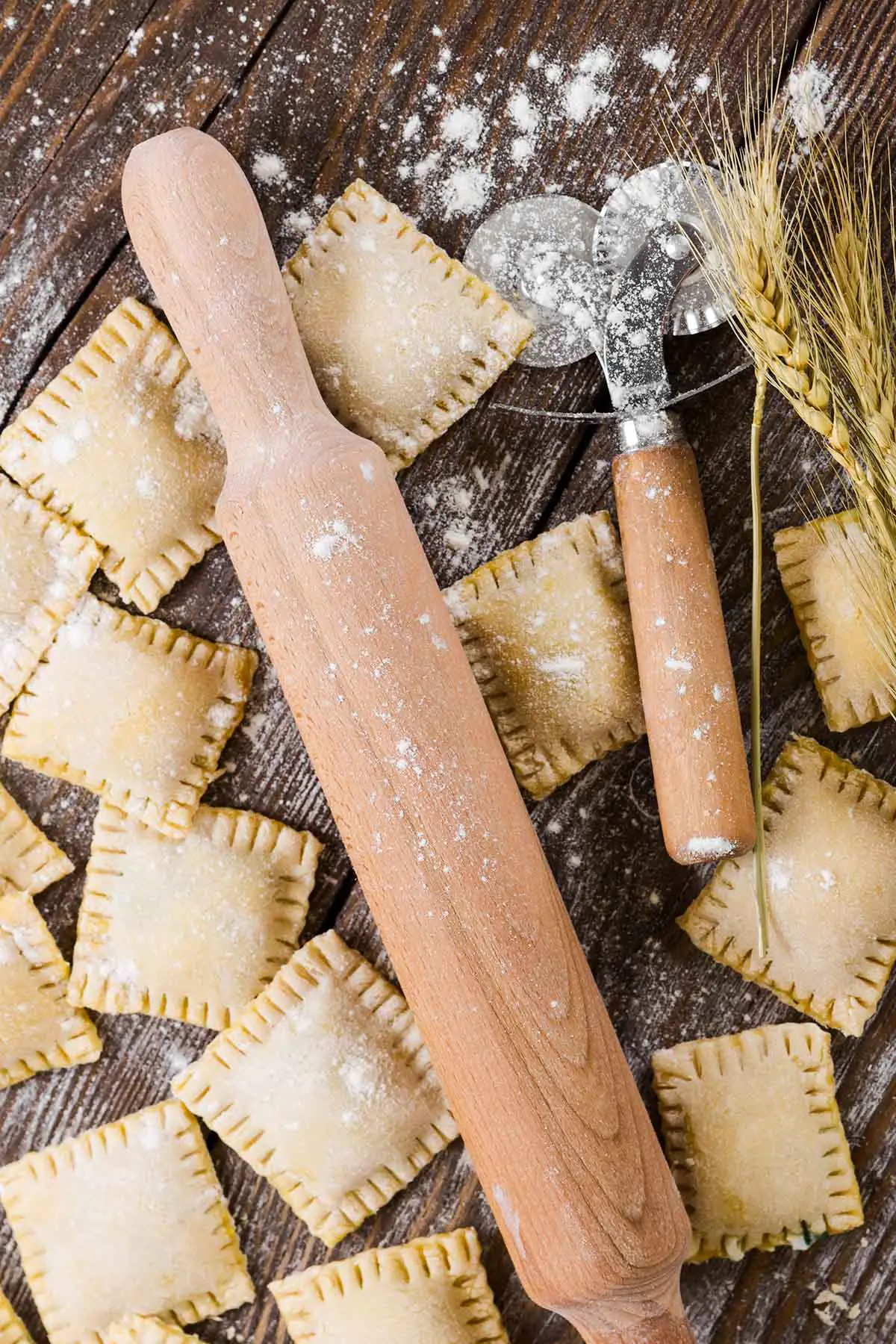
Ravioli are one of my favorite dishes. They come in all kinds of shapes and the flavor combinations of the fillings are endless. From cheese to vegetables, to meat, or seafood. You can make all kinds of Ravioli for a delicious and impressive meal.
No matter the shape or filling, the process of making Ravioli is always the same. Make the pasta dough, make the filling, and assemble the Ravioli. Easy, right?
Check also this post on how to make 10 different Pasta shapes without a pasta machine and this guide on Pasta Shapes and Sauces.
Jump to:
What are Ravioli
Ravioli is the common Italian name for filled pasta, but there are several different names depending on the shape.
Ravioli are commonly square or round-shaped filled pasta, then there are Mezzelune when they're shaped like a half moon, and Tortelloni or Tortellini when they're folded. Then there are the regional special shapes like the Sardinian Culurgiones, the Agnolotti from Piedmont, and many more.
But let's not forget also our international cousins like the Chinese dumplings or the Polish Pierogi. Filled pasta is a worldwide loved dish.
Ingredients
The base ingredients for Ravioli are of course the same as for any egg pasta recipe. Then you would have to add the ingredients for the filling, based on the recipe you want to make.

- Eggs. Eggs are essential to making egg pasta and there is no substitution available that would give the same flavor and consistency. You can make eggless pasta, but it would be almost impossible to stretch thin to make the Ravioli, so it's only used for extruded or chunky pasta shapes, like Pici or Cavatelli.
- Flour. All-purpose flour is used in combination with eggs to make pasta. You can use only all-purpose flour or mix it with Semolina for the best flavor and consistency. You can also use different types of flour like spelt, and wholemeal.
- Semolina Flour. Semolina or Semola Rimacinata is coarsely milled durum wheat and gives a nice flavor and consistency to the pasta. Search for the finer grind for the best result. You can also omit it if you can't find it.
- Vegetables. To give a bit of color and flavor to the pasta, you can add purèed vegetables like spinach, carrots, or tomato.
See recipe card for quantities.
Instructions with photos
To make Ravioli, you have three separate steps to follow: first, you make the pasta dough. Then, while it rests, you make the filling. And at the end, you assemble and cook them.
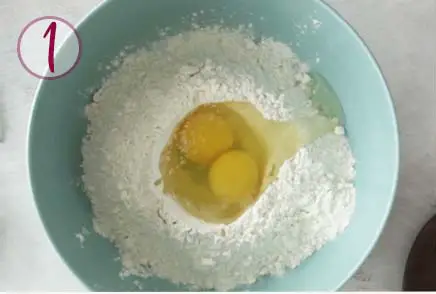
Step 1. In a large bowl or surface, add the flours and make a well in the center. Add the eggs and a pinch of salt and start whisking the eggs while slowly adding the flour.
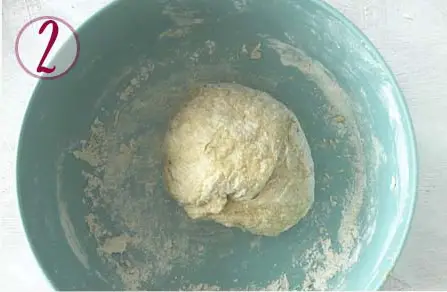
Step 2. When the dough becomes too sticky to mix with a fork, start kneading it with your hand. Add more flour if needed, until you get a ball of dough that is not sticky. Cover in plastic wrap and set aside to rest for 15 minutes.
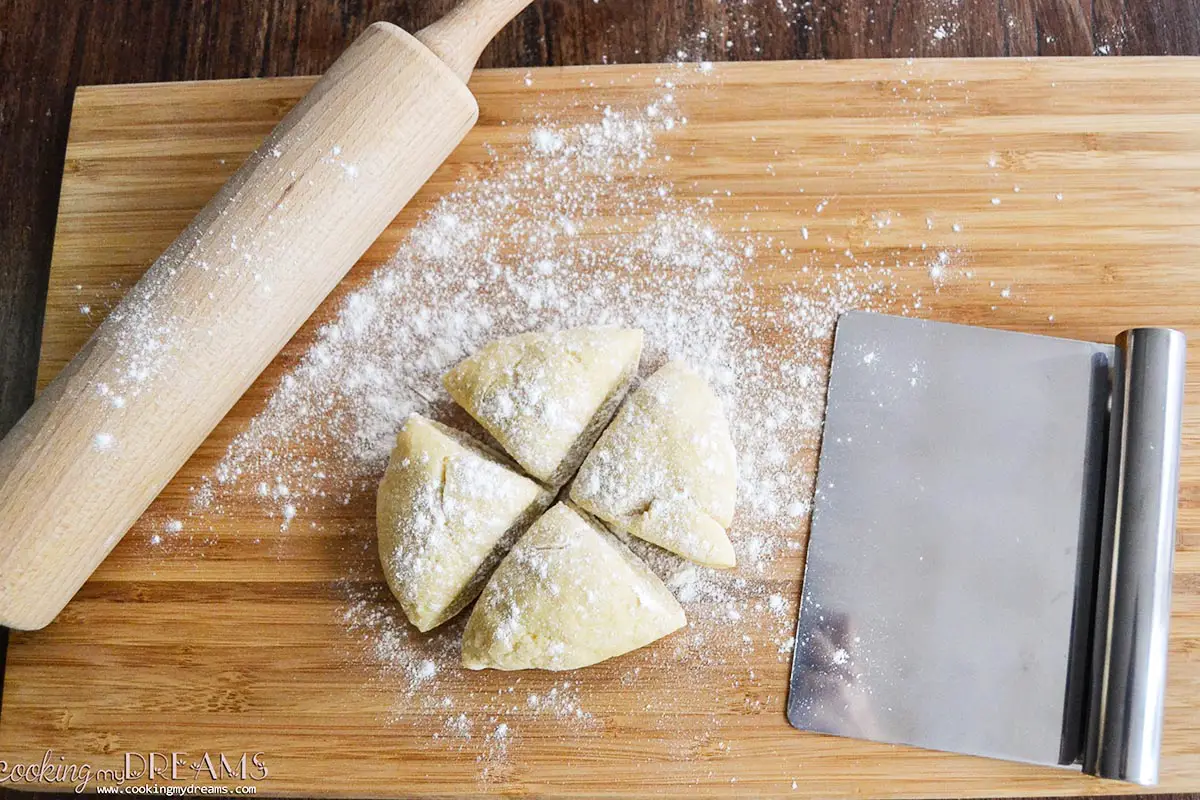
Step 3. Meanwhile, prepare the filling. After 15 minutes, divide the dough into smaller chunks and dust a wooden board with flour.
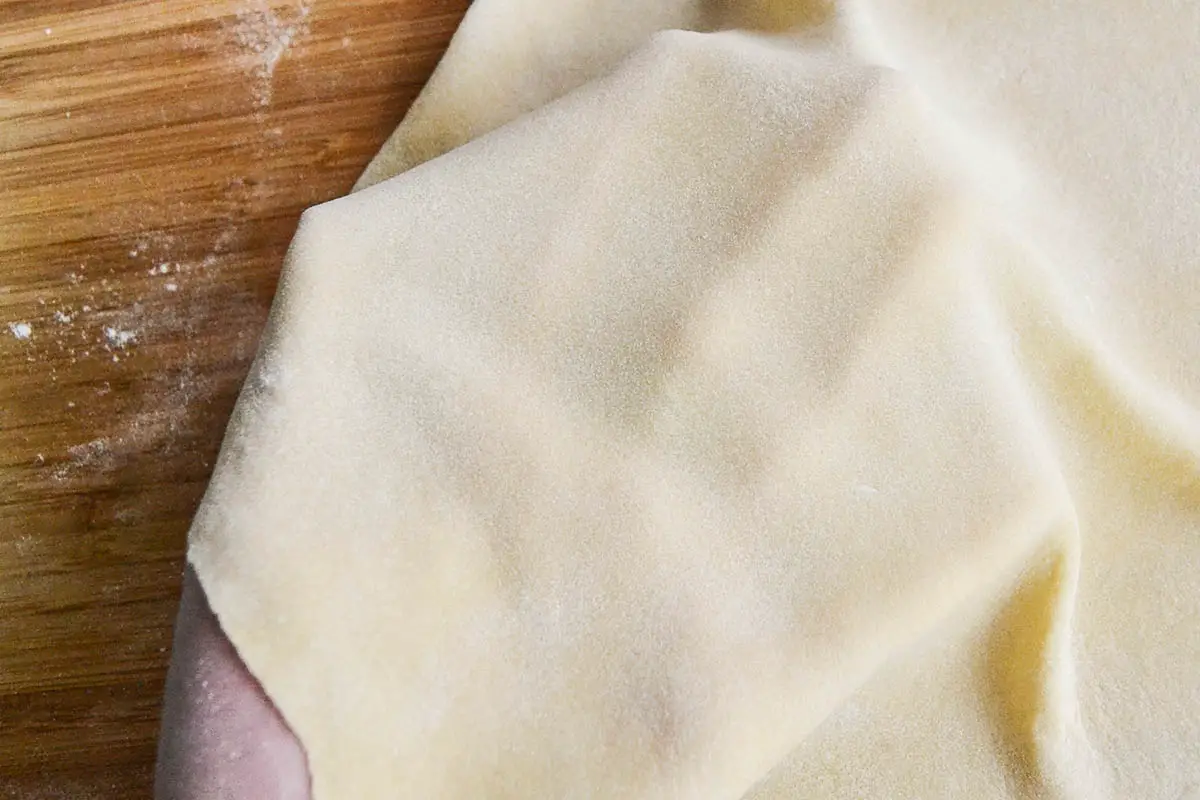
Step 4. Stretch the dough into thin sheets with a rolling pin or a pasta machine. The sheet should be thin enough to be almost translucent.
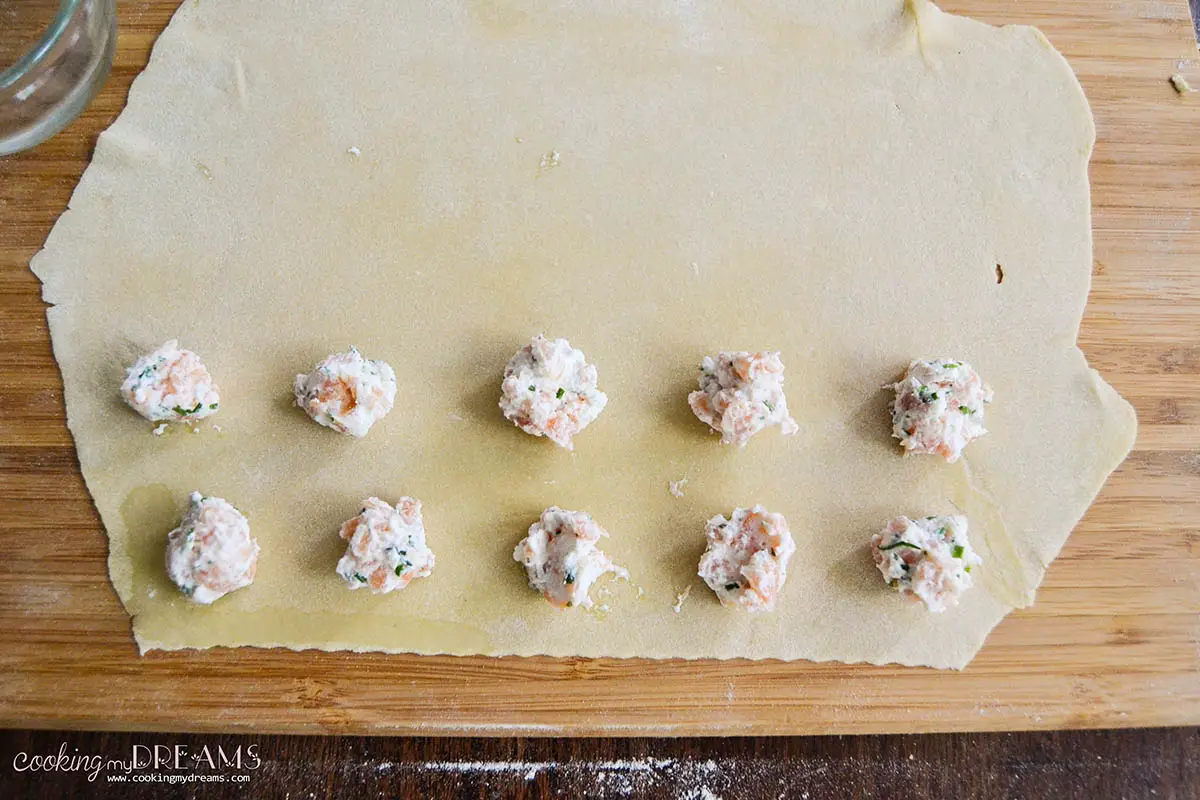
Step 5. Add the filling with a teaspoon or a piping bag, distancing it about 1 inch. Spray from above lightly with water to make the pasta sticky, or dip your finger in water and pass it around the fillings.
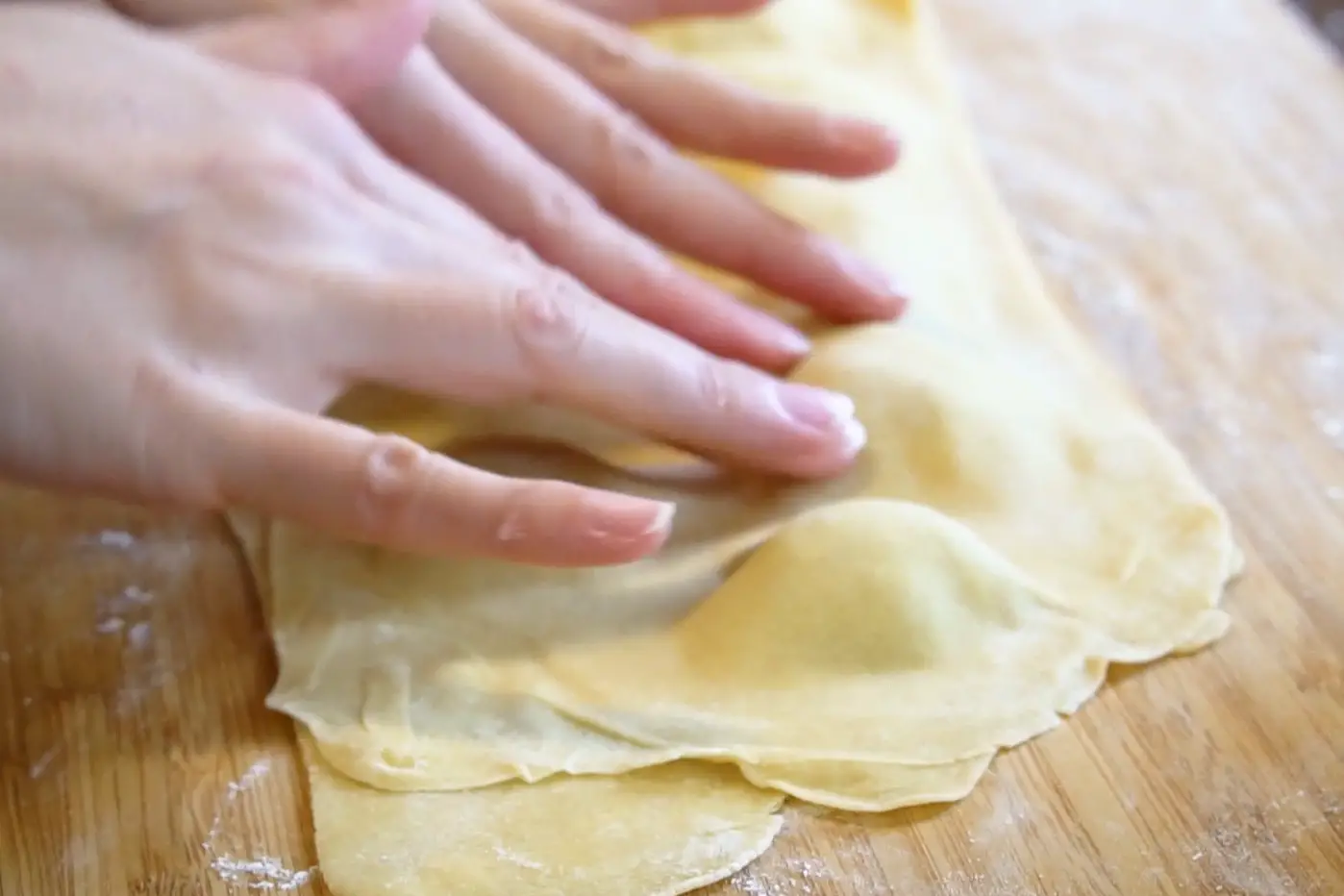
Step 6. Fold or place another pasta sheet of the same size on top. Lightly press with your fingers around the fillings to let the air out and make the pasta sheets stick to each other.

Step 7. With a pasta wheel or a pasta cutter (or a knife), cut out the ravioli and press again lightly the edges to make sure the pasta is well stuck. Otherwise, it may open while cooking.
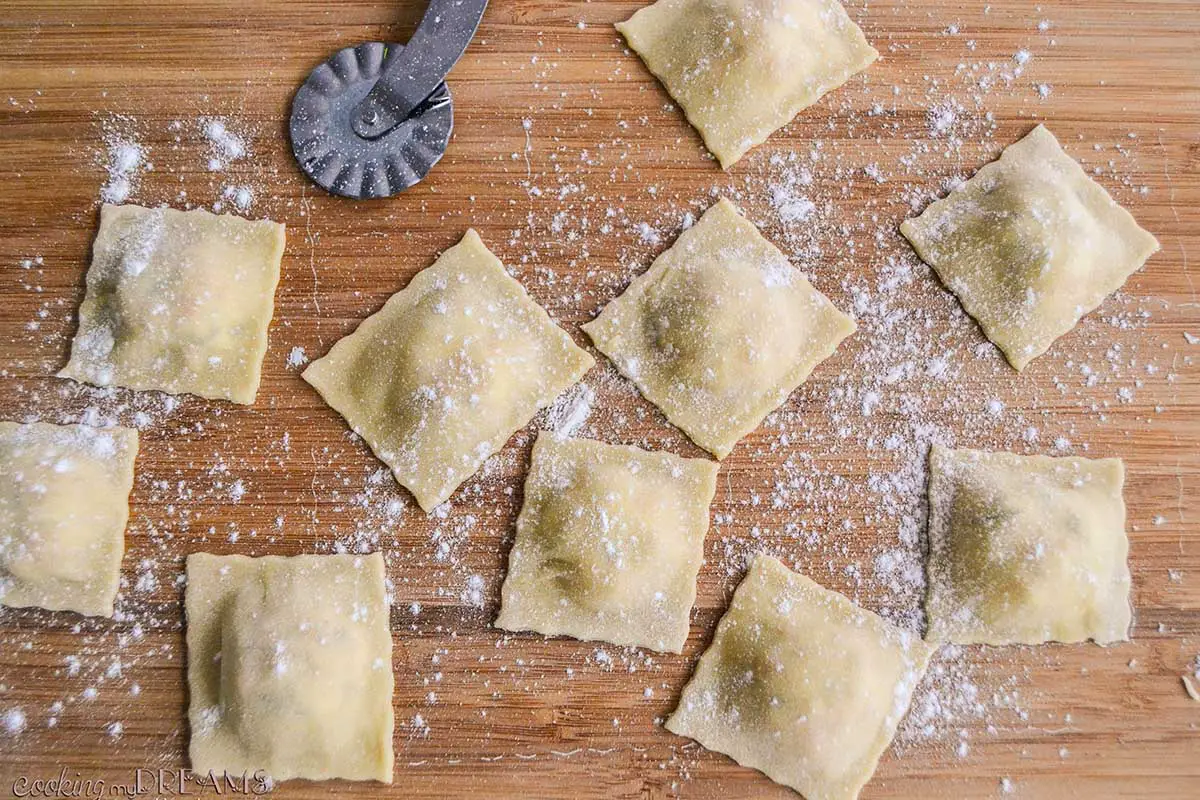
Step 8. Set the ravioli aside on a clean towel to rest until you're ready to cook them. Boil in salted water for 2-3 minutes, then add them to the sauce.
Tools you need
In the beginning, you can get by with just a wooden board and a rolling pin, but if you want to up your ravioli game, then these tools will come in handy!
- Wooden Kneading Board
- Rolling Pin
- Manual Pasta Machine
- Electric Pasta Machine
- KitchenAid Pasta Machine Attachment
- Pasta Wheel Cutter
- Ravioli Shapes Cutters (square, round, heart)
- Pasta Drying Tray
- Sac-a-Poche (Piping Bag)
- Water Spray Bottle
Filling Variations
The filling options for ravioli are literally endless. Just keep in mind these tips when choosing a filling: it needs to be purèed or finely chopped and mixed with a creamy component (such as Ricotta cheese).
- Ricotta and Spinach - the most classic Tuscan filling for Ravioli, also called Tortelli Maremmani.
- Meat - Braised beef, ground beef, bacon, or ham, are some of the most common meat used in fillings, usually combined with other vegetables, cheese, or a thick ragù. The most classic meat filling is braised beef and cabbage in Agnolotti del Plin and the classic Tortellini with prosciutto and mortadella.
- Vegetables - Any cooked and minced or purèed vegetable can become a Ravioli filling. From mushrooms to pumpkin, to eggplant, and more.
- Cheese - With Ricotta cheese as a base, you can add more cheese like Pecorino or Gorgonzola, or add fresh herbs to the Ricotta to keep it simple.
See some Ravioli fillings ideas:
How to pair Ravioli with the right sauce
For a successful dish, it's very important to pair the ravioli with the right sauce. A wrong combo could result in an underwhelming dish or a sauce can totally overpower the flavor of the ravioli, making all your effort go to waste.
- Butter and Sage. This is the most classic way to serve ravioli. Butter and sage is simple enough to complement most fillings, especially vegetable fillings.
- Cream Sauce. Heavy cream with the addition of garlic or cheese, or both. It's a delicious sauce to pair with more flavorful fillings, like mushrooms or seafood.
- Tomato Sauce. Tomato has a decisive flavor so it should be paired with simple fillings, like potato ravioli, or the classic spinach and ricotta.
- Other. For hundreds of filling combinations, there are hundreds of sauce combinations. The most important thing to keep in mind is to combine flavors that complement each other and do not overpower.
Storage
You can freeze raw ravioli for up to 3 months. Here's how to successfully freeze ravioli:
- Place the ravioli on a tray lined with parchment paper, making sure they don't touch each other.
- Freeze for 3-4 hours (or 1 hour at the very least).
- Once fully frozen, you can move the ravioli into a freezer bag.
- To cook, toss the ravioli directly into boiling water without thawing and cook for 4-5 minutes.
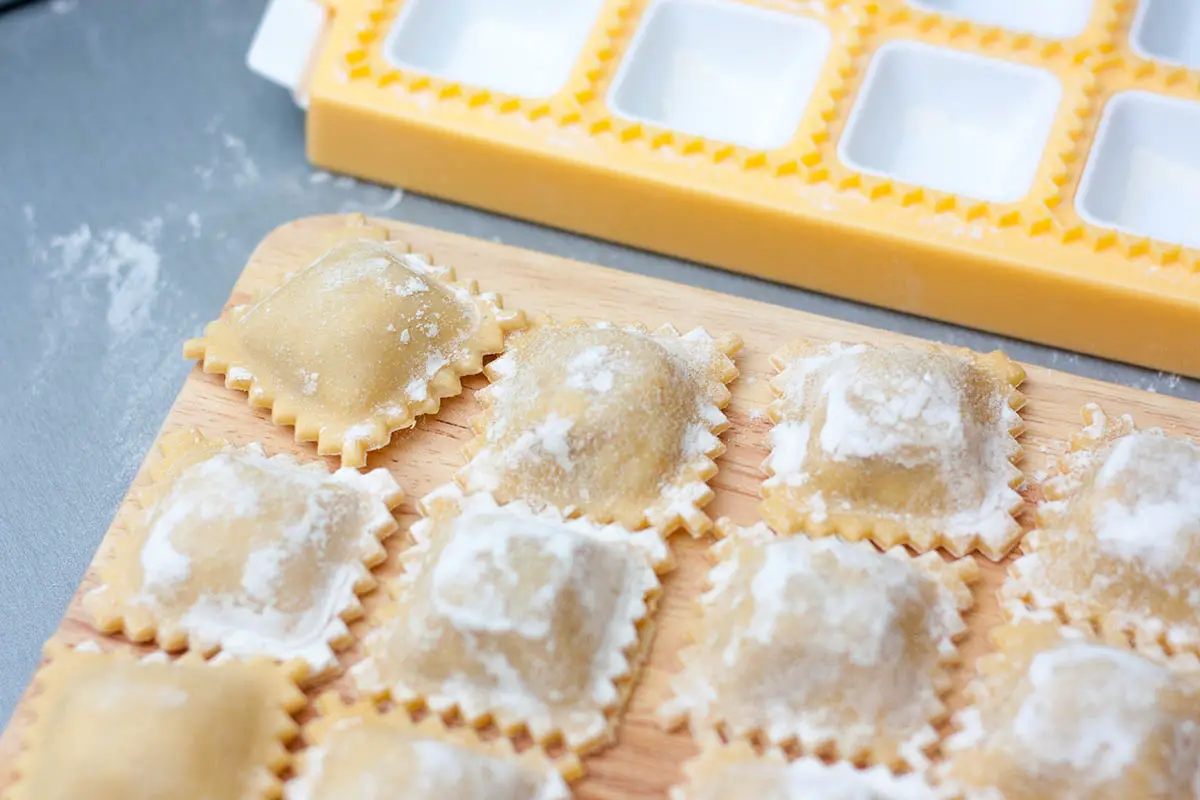
FAQ & Tips
If the ravioli opens while boiling, it means the pasta did not stick correctly. When you prepare the ravioli, make sure to wet the pasta with water before closing them and press well the edges with your fingers or with a fork.
Spraying water is the easiest way to make the pasta moist before closing the ravioli. Alternatively, you can dip your finger in water and pass it around the fillings before closing the pasta sheets.
Yes, it's absolutely possible, although it may take a bit more time. All you need is a large working surface like a marble counter or a wooden kneading board, and a rolling pin. Dust the surface well with flour and continuously turn the pasta while using the rolling pin, to get an even thickness.
Top tip
The best ravioli must have the perfect ratio of filling to pasta. That's why it's so important to make the pasta as thin as possible. It should be almost translucent. On a pasta machine, you can use the second-last thinnest setting (the last one may be too thin and can more easily tear).
If pasta is too thick, the edges will be too hard and probably undercooked, making the whole ravioli difficult to eat.
The filling should be approximately the size of a walnut.
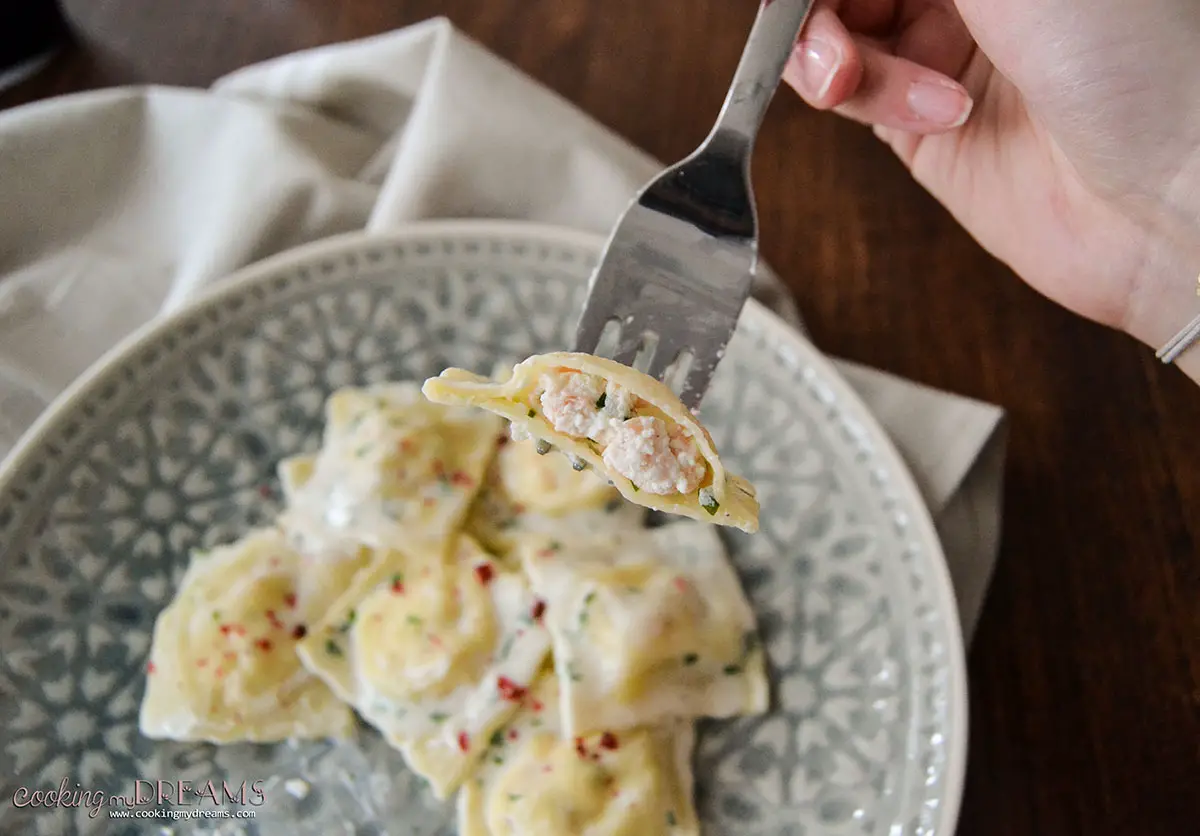
Food safety
The pasta dough has raw eggs in it, so I don't recommend leaving the ravioli at room temperature for more than a few hours.
If you need to make them in advance, I recommend freezing them.
Ravioli Recipes you should try
Looking for recipes with ravioli? Try these:
If you tried this recipe, please take a moment to rate it and share your thoughts in the comments. Your feedback means a lot to me! ★★★★★
📖 RECIPE
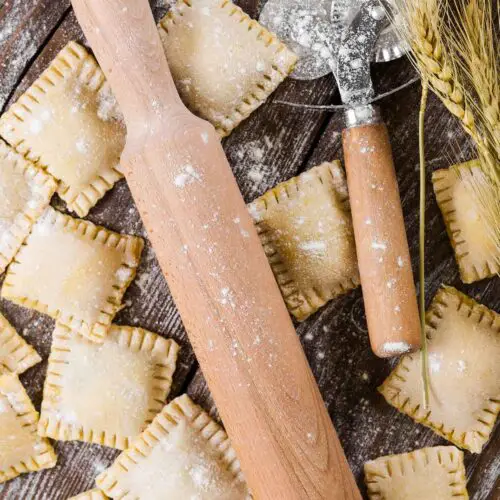
Ravioli
Equipment
Ingredients
- 2 Eggs
- 1 ½ Cups All-Purpose Flour, or half mixed with Semolina flour
- Salt
Instructions
- In a large bowl, add the flour and a pinch of salt. Break the eggs in the middle and whisk them with a fork.
- Slowly mix the eggs with the flour until it starts becoming a sticky dough. When it’s too sticky to mix with the fork, start kneading with your hands. Knead for about 10 minutes until you get a smooth and non-sticky dough.
- If it’s too sticky, add more flour, if it’s too crumbly, add a few teaspoons of water until you get the right consistency.
- Cover the pasta dough in plastic wrap and set in the fridge to rest for 10-15 minutes.
- Meanwhile, prepare the filling of choice.
- With a pasta machine or a rolling pin, stretch the floured pasta dough until you get thin sheets of approximately the same size.
- Dust the wooden board with flour and set one sheet of pasta. Add balls of filling the size of a walnut with a teaspoon or a piping bag. Wet the pasta around the filling with some water using a kitchen brush or your fingers.
- Take the other sheet of pasta and place it on top. Press well with your fingers around the filling to remove as much air as possible and to stick the two sheets of pasta together.
- Using a wheel cutter or a ravioli cutter, cut your ravioli and set them aside on a clean towel. Meanwhile, bring a large pot of salted water to boil.
- Gently toss the ravioli in the boiling water one by one and cook for 2-3 minutes. Drain with a skimmer and add them to the pan with the sauce.
Notes
Nutrition
Nutritional information is only an estimate. The accuracy of the nutritional information for any recipe on this site is not guaranteed.





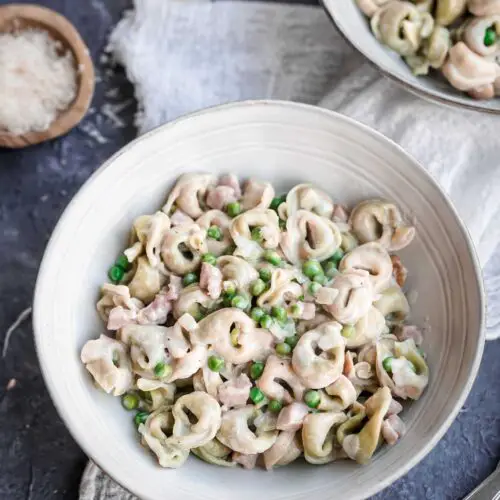

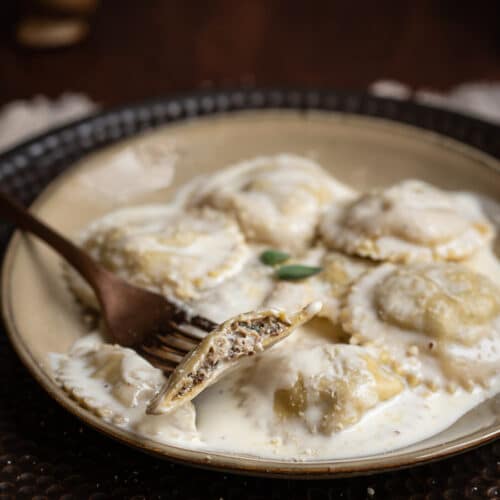
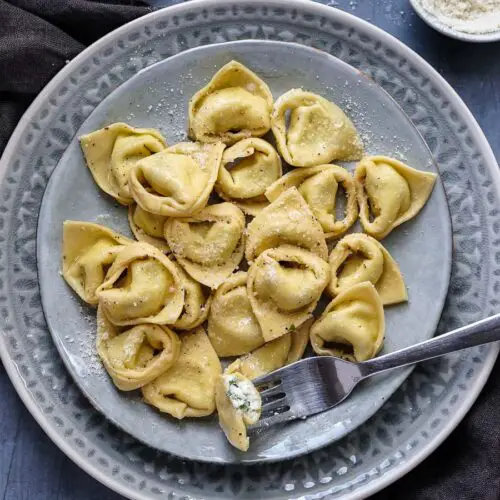
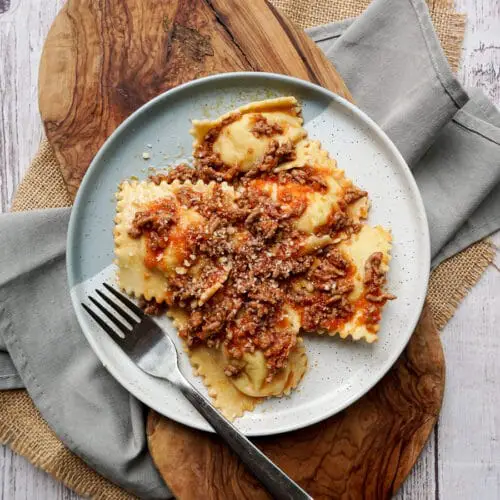
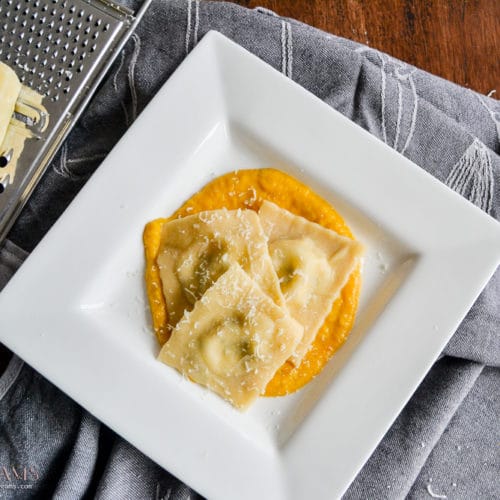


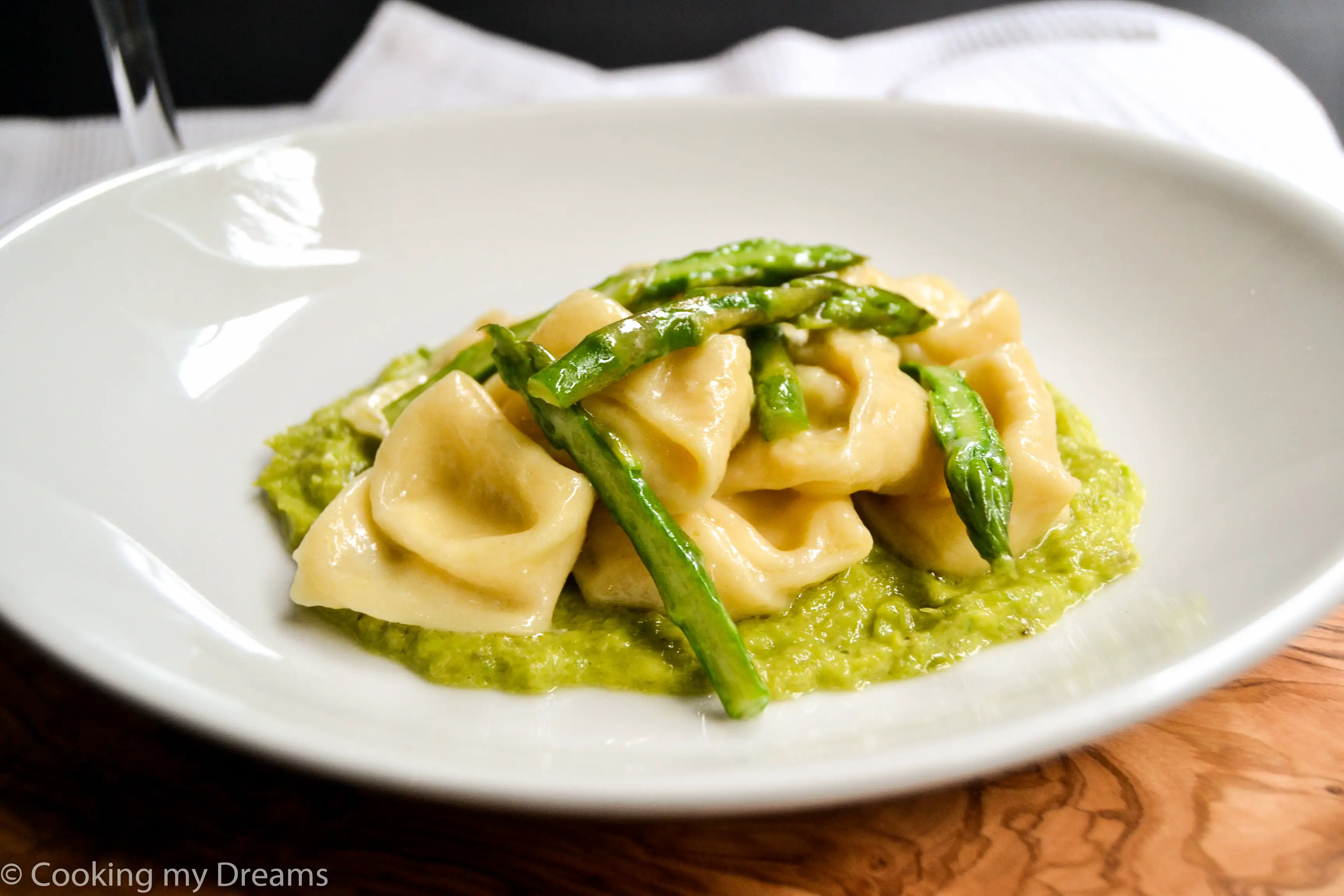

Leave a Comment